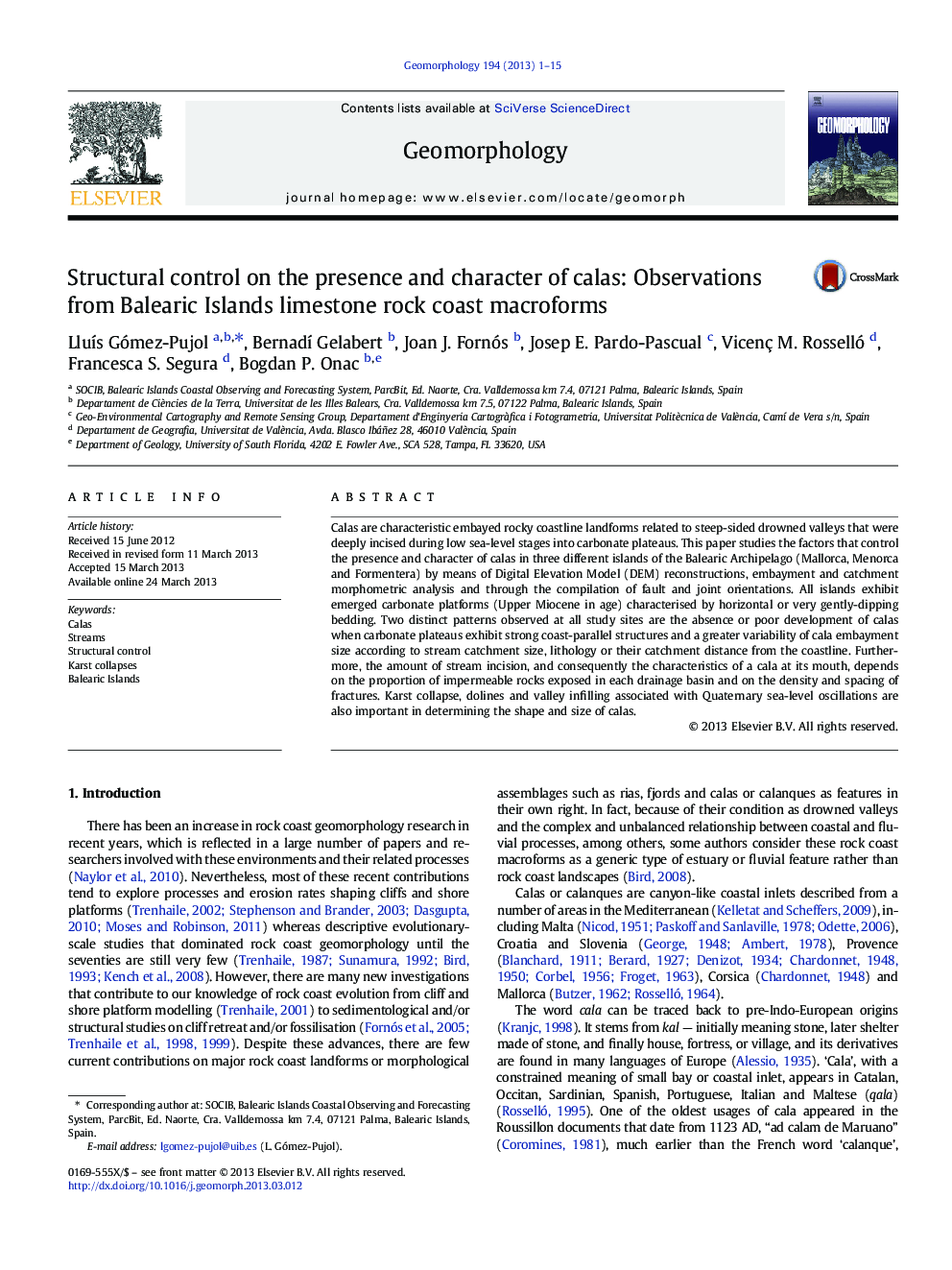| Article ID | Journal | Published Year | Pages | File Type |
|---|---|---|---|---|
| 4684893 | Geomorphology | 2013 | 15 Pages |
•The determinants of the presence and character of calas are examined.•Structure and a minimum plateau surface are the main controls on cala development.•Cala shape and size depend on fracture densities and on karstic phenomena.
Calas are characteristic embayed rocky coastline landforms related to steep-sided drowned valleys that were deeply incised during low sea-level stages into carbonate plateaus. This paper studies the factors that control the presence and character of calas in three different islands of the Balearic Archipelago (Mallorca, Menorca and Formentera) by means of Digital Elevation Model (DEM) reconstructions, embayment and catchment morphometric analysis and through the compilation of fault and joint orientations. All islands exhibit emerged carbonate platforms (Upper Miocene in age) characterised by horizontal or very gently-dipping bedding. Two distinct patterns observed at all study sites are the absence or poor development of calas when carbonate plateaus exhibit strong coast-parallel structures and a greater variability of cala embayment size according to stream catchment size, lithology or their catchment distance from the coastline. Furthermore, the amount of stream incision, and consequently the characteristics of a cala at its mouth, depends on the proportion of impermeable rocks exposed in each drainage basin and on the density and spacing of fractures. Karst collapse, dolines and valley infilling associated with Quaternary sea-level oscillations are also important in determining the shape and size of calas.
